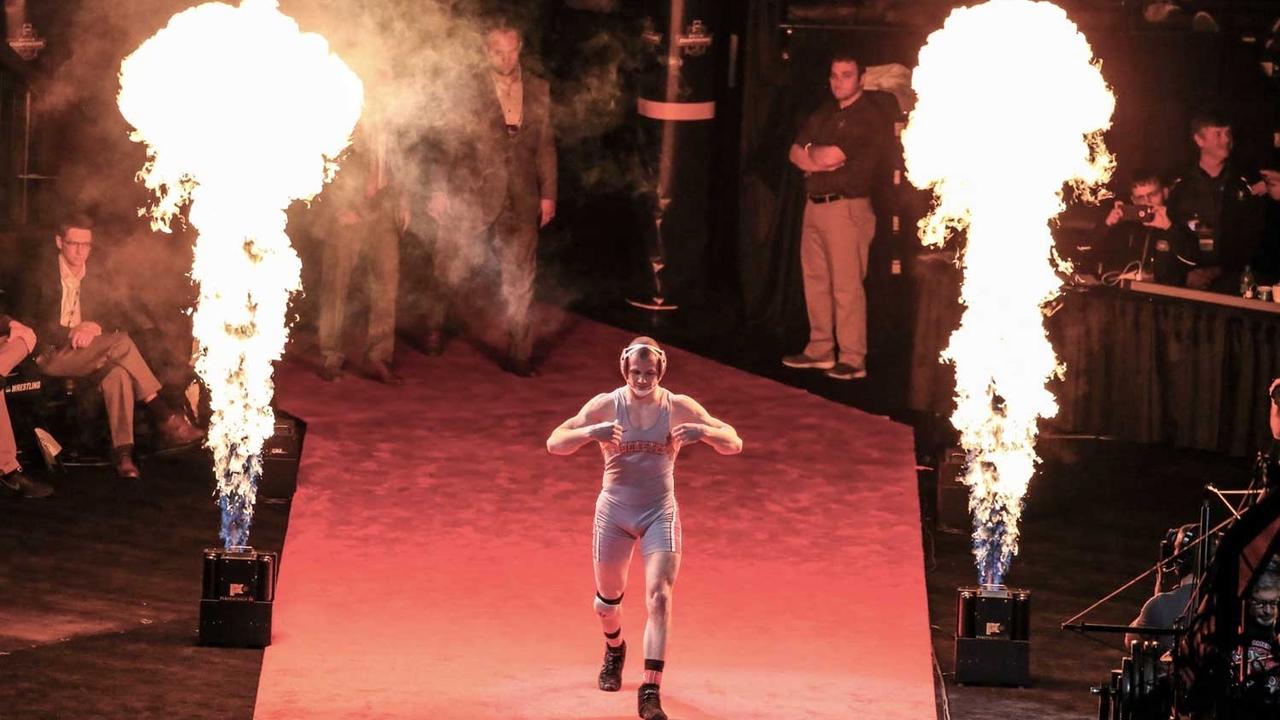How elite athletes are able to get in the zone

By Zack Tanenbaum
Flow in Sports
Unstoppable. I am unstoppable. Try and beat me; try and take me down. Machine — I am a machine. My body is ticking like clockwork. My every move is precise and seemingly effortless. I have no pain. No doubt enters my mind. My mind sees my opponent’s move before he even makes it. I am enjoying the competition. The fans screaming in the stands are not in my consciousness. All of my attention is focused in one place. Nothing else matters but my goal, my dream of being a high school state wrestling champion. “If you even dreamed about beating me you need to wake up and apologize.” It won’t happen. At least not now — not while I’m experiencing flow.
The intense moment I described above was an experience I had during the 2009 Kansas High School State wrestling finals. I was only a sophomore in high school, competing against Jeff Vesta, a senior and the defending state champion. I was going for the gold medal. I was the underdog. Something clicked that day. I was in a state of consciousness that I had experienced in wrestling matches before, but never so intensely.
“If you even dreamed about beating me you better wake up and apologize”
What exactly is flow, what does it feel like, and is there anything you can do to make it happen? In this essay I will discuss the phenomena of flow from a more contemplative perspective, particularly in sports. I will examine what it is composed of, and describe how it feels through testimonials. I will also debate the positive and negative outcomes of flow as it relates to an athlete’s overall well being. Flow is powerful. Flow is productive. Flow is relatively unknown to most, and because of the difficulties in initiating this concentrated state of consciousness, how do you increase your chances of experiencing this “in the zone” moment more often?
Defining Flow
Flow is very complicated to describe. It’s like trying to describe the taste of ice cream to someone who’s never had it before. It is easy to explain the effects and textures of eating ice cream (a salivating mouth, a smooth consistency, and a cold, tingling feeling on your taste buds), yet when trying to describe exactly “what” the flavor tastes like to someone who’s never experienced it before is often quite trying. This is a good analogy for flow because the feeling of flow is best understood by experiencing it.
The best way to define flow in athletes is by analyzing the similarities in elite athletes’ experiences, and using them to form a definition. This is how the world-renowned sport psychologist, Mihaly Csikszentmihalyi, created the name. “Csikszentmihalyi coined the term in his 1975 interviews where several people described their flow experiences using the metaphor of a water current carrying them along.”
Other common names for flow may include on fire, the present, on a roll, in the groove, or in the zone.
According to Csikszentmihalyi, flow in sports is “to feel completely at one with what you are doing, to know you are strong and able to control your destiny at least for the moment, and to gain a sense of pleasure independent of results…it is a state of consciousness where one becomes totally absorbed in what one is doing, to the exclusion of all other thoughts and emotions. So flow is about focus. More than just focus, however, flow is a harmonious experience where mind and body are working together effortlessly leaving the person feeling that something special has just occurred. So flow is also about enjoyment.”
Collaboration of mind and body
Dr. Csikszentmihalyi portrays flow as a smooth and efficient collaboration of the mind and body — this is significant. The mind and body intertwine to work together so that one’s entire being is focused 100% on the task at hand. This is what propelled me into the dream-like state during my state finals match. Mind and Body — A sense of oneness with myself and the world. Varela, Thompson, and Rosch, authors of The Embodied Mind, discuss how through an intense state of mindfulness and a strong awareness of the present, one can completely focus on the here-and-now to the extent that they dive into a state of conscious where neither the true self nor the world exist. Everything is one. This is how I felt when my body and mind intertwined to create an efficient machine. The only thing I cared about was my task at hand; everything else was completely blocked out from my senses. I could not hear. I could not see anything more than what was right in front of me. I was in a state of confined mindfulness, of beautiful clarity and emptiness. In Buddhism this is called Vipassana.
Components of Flow
What do we experience when we are enveloped in flow? The book Flow in Sports gathered many studies and interviews from athletes of many different sports in order to analyze the dimensions of flow. From the research and the athletes interviewed, there are nine fundamental and prevailing themes of flow. These are:
- Challenge-skills balance
- Action-awareness margin
- Clear goals
- Unambiguous feedback
- Concentration on the task at hand
- Sense of control
- Loss of self-consciousness
- Transformation of time
- Autotelic experience.
In the next section, I will talk about each one of these themes, and how they relate to the importance of skillful mental control during flow.

